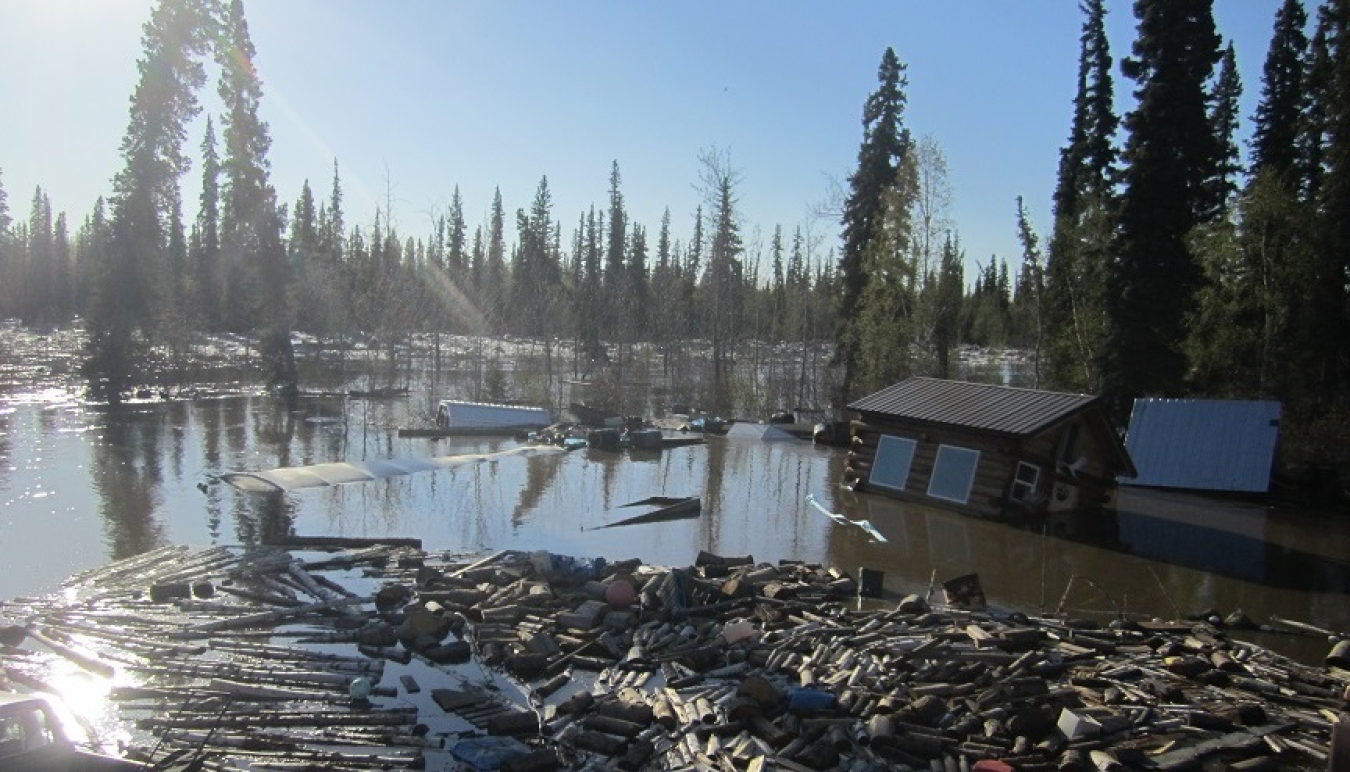This blog, adapted from an academic paper, discusses Alaska's biggest resilience challenges for communities and government entities alike. Author Nicole Jacobs proposes a student-led center for arctic security and resilience.
July 8, 2021
The winters are getting warmer, wildland fires are increasing, and Alaska is changing. It is undeniable that Alaska experiences climate change at a faster rate than any other state. Anthropogenic climate change creates new security challenges; as a threat multiplier, it magnifies existing ones. The impacts from permafrost thaw, floods, and coastal erosion may cost up to $6.1 billion by 2030 in infrastructure alone, according to P.H. Larsen in “Estimating future costs for Alaska public infrastructure at risk from climate change.”
Author Robin Bronen personalizes this economic impact in her paper, "Climate-induced displacement of Alaska Native communities." She emphasizes that communities such as Shishmaref, Kivalina, and Shaktoolik must relocate. Relocation is not easy and will be one of Alaska's biggest resilience challenges for communities and government entities alike. While researchers have suggested multiple ways to support these communities, an indispensable strategy is collaboration. Our actions now and in the coming decades will determine the severity of risks we will face.
During my time at the University of Alaska Fairbanks (UAF), I noticed similarities in the challenges many communities across Alaska encounter including the lack of disaster planning assistance, an absence of resources, and gaps in scientific data like a baseline flooding assessment. Studying Security and Disaster Management, with a concentration in Climate Security, has taught me that adapting to the effects of climate change requires a wide variety of expertise, including urban land planners, communication and cultural experts, security and disaster managers, and engineers.
A student development center at UAF that creates a collaborative space for current and future experts to address climate security and human security concerns of communities is something I envision as a step towards resilience. The Student Center for Arctic Security and Resilience (SCASR) could empower students by enhancing practical skills and experience beyond what is learned in the classroom, and might even serve as a model for other universities. The risks from climate change are not going to just disappear. Students need to obtain the best academic and technical instruction possible in order to address future resilience challenges.

The University of Alaska at Fairbanks.
As a graduate student, I'm aware of our university's existing capabilities for climate research, innovation, and community planning. UAF is home to facilities such as the Institute of Northern Engineering, the International Arctic Research Center, and the Center for Arctic Security and Resilience, which are excellent resources for increasing and supporting community resilience. Via SCASR, students in a variety of fields could leverage the expertise at these organizations and would gain hands-on experience participating in research, creative design and implementation, community engagement, and networking with people from other disciplines. SCASR would bring together students from multiple disciplines like Security and Disaster Management, Atmospheric Science, Policy, Indigenous Studies, Engineering,…
Disaster Management students would collaborate with communities to create risk assessments, hazard mitigation plans, and pre-disaster recovery plans; Engineering students would design and construct infrastructure like renewable energy sources, waste management, and other community construction projects; Atmospheric Science students would create models, predictions, and assess climate impacts. Working together via SCASR would establish a more holistic approach to climate challenges and education. The Student Center for Arctic Security and Resilience could be funded by research and educational grants, or through collaboration with various entities--maybe including DOE. Many academic grants actively encourage student participation.
Acting Arctic Energy Office Director George Roe sees the possibilities that such a center could provide. He said, “Nicole’s concept of the Student Center for Arctic Security and Resilience is a great example of working together to share our challenges, knowledge, capabilities and lessons learned so that we can move forward with greater resilience into the future that we’ll share.”
Providing support to Alaskan communities is vital to addressing the evolving climate security issues already present and ever emerging within the region. With appropriate staffing and support, SCASR could serve as a low-cost resource for communities as they seek to bridge some of the gaps they are facing. We all are facing the risks from climate change. As an African proverb says, "If you want to go fast, go alone. If you want to go far, go together."
What ideas might you have to help rural communities facing these risks? We invite your comments at [email protected].
Note: Nicole is an intern from the University of Alaska Fairbanks who is a graduate student studying Security and Disaster Management with a concentration in Climate Security. This blog is adapted from an academic paper she wrote as a graduate student. During her Minority Educational Institution Student Partnership Program internship at the Arctic Energy Office, she is studying U.S.-European Arctic collaboration.
References
Bronen, R. (2013). Climate-induced displacement of Alaska Native communities. Washington
DC: Brookings Institution (US).
Larsen, P. H., Goldsmith, S., Smith, O., Wilson, M. L., Strzepek, K., Chinowsky, P., & Saylor, B. (2008). Estimating future costs for Alaska public infrastructure at risk from climate change. Global Environmental Change, 18(3), 442-457.

